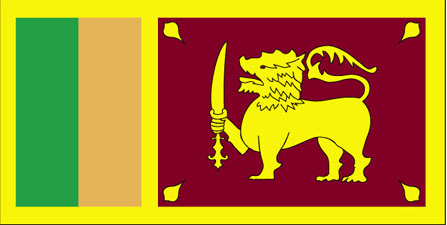To help inspire or plan your trip to Sri Lanka, some of its major attractions
for travellers are shown below, including some of the best natural, historical, cultural and adventure sites in the country.
These include all of UNESCO World Heritage Sites for Sri Lanka which represent the best
of the world's cultural and natural heritage.
Click on the icons below to focus on specific types of features
(click again to return to all).
|
|
|
|
|
|
|
|
|
|
|
|
 |
|---|---|---|---|---|---|---|---|---|---|---|---|
| Natural | History | Wildlife | Trekking | Cities | Religious Monument | Boat Journey | Rail Journey | Diving | Cultural | Adrenaline | UNESCO WHS |
Historical attractions in Sri Lanka
| Anuradhapura | |
|---|---|
Anuradhapura was founded in the 4th century BC and was the political and religious capital of Sri Lanka for 1,300 years until it was abandoned in 993 following a series of attacks by invaders from southern India. The ruins include palaces, monasteries and monuments such as the Ruvanvalisaya Dagoba (with a 90m high dome) and the Smadhi Buddha. A sanctuary near the Brazen Palace contains a bodhi tree which supposedly originated from a cutting from the tree under which the Buddha gained enlightenment. Close to Anuradhapura lies Mihintale, the site where the King of Anuradhapura was converted to Buddhism in 247 BC and therefore regarded as the cradle of Buddhism in Sri Lanka. There are many pagodas, monasteries and caves in the site which is accessed by climbing 1840 stone steps, offering spectacular views over the surrounding plains and back to Anuradhapura. UNESCO World Heritage Site: Sacred City of Anuradhapura | |
| Polonnaruwa | |
|---|---|
After the destruction of Anuradhapura in the 10th century, Polonnaruwa became the capital city. The Chola occupiers built many monuments to Shiva and their Brahmanism religion before the reconquest of Ceylon in 1070. The city's golden age occurred in the 12th century when the rulers Parakramabahu I and Nissamkamalla I built a vast garden city of palaces and temples whose ruins are well preserved. Monuments of note included the Lankatilaka with a huge image of the Buddha, the rock sculptures of the Gil Vahara, the wall paintings of Tivanka Pilimage which illustrate previous lives of the Buddha, the enormous relic chamber of Rankot Vihara and the Temple of the Tooth Relic which once held the tooth of the Buddha. The city fell into decline in the 13th century and the capital was moved to Kurunegala. UNESCO World Heritage Site: Ancient City of Polonnaruwa | |
| Lion Rock of Sigiriya | |
|---|---|
The Lion Rock at Sigiriya is a granite peak that is 370 metres high. In the 5th century, King Kassapa I built a fortress on the slopes and summit of the rock. A series of steps and steel stairways leads to the top which offers stunning views of the surrounding landscape and contains the ruins of the king's summer palace. Halfway up beneath a rock overhang are the famous frescoes known as the Sigiriya Damsels while poems inscribed on the rock are some of the most ancient texts of the Sinhalese language. UNESCO World Heritage Site: Ancient City of Sigiriya | |
| Nuwara Eliya | |
|---|---|
Nuwara Eliya was an old British hill station located at 1,890 metres where officials and planters would head in the summer to escape the heat of the plains. The town lies in the shadow of Pidurutalagala, Sri Lanka’s highest mountain at 2,524 metres. The town has a faded colonial charm in places like the Grand Hotel and the Hill Club as well as many British style houses and a racecourse. | |
| Old Town of Galle | |
|---|---|
The old fortified town of Galle was founded by the Portuguese in the 16th century and extended by the Dutch in the 17th century. Located on the south-west coast of Sri Lanka, Galle was an important trading port. Galle Fort spans 90 acres, inside walls defended by 14 bastions, within which lie the Clock Tower magnificent colonial churches, houses and other buildings. UNESCO World Heritage Site: Old Town of Galle and its Fortifications | |


